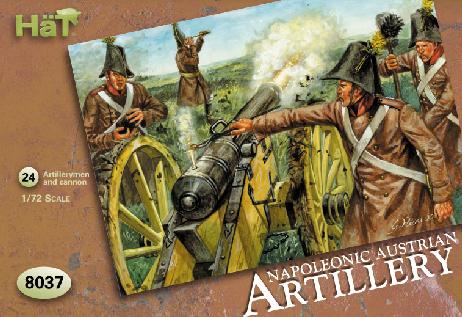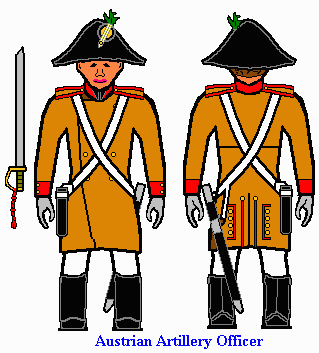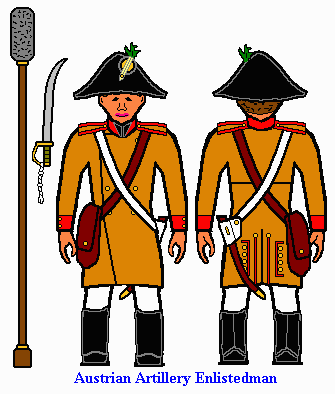
#8037 Austrian Artillery



Dated: January 10, 2000
#8037
Napoleonic Austrian Artillery
French: Artillerie Autrichienne
German: Österreichische Artillerie
Spanish: Artillería Austriaca
Italian: Artiglieria Austriaca
Dutch: Oostenrijkse Artillerie
Jean Baptiste de Gribeauval, the "father of French Artillery" volunteered for service in the Austrian Artillery from 1756 to 1762 and brought his knowledge to perfection there. By the beginning of the Revolutionary wars the Austrian "Feuerstein system" was outdated in comparison to the French Gribeauval and "Year XII" pieces. These were lighter but threw "heavier shot" as the French standard piece was the 4 pounder, fast superseded by the 6 pounder and the French pound was about 20% heavier than the "Austrian pound". What counted even more was the "massing" of individual guns into large batteries. Also "massing" guns was in use before Napoleon, but he put it into "common use" and applied it in his strategies of warfare. The Austrian Artillery was too long hampered by the dislocating the guns into small bodies like the "Battalion guns". The Archduke Charles abolished these system in his 1806 reforms and tried replace the 3 pdrs as much as possible by the 6 pdr and to concentrate and mass guns into larger batteries. But Austrian mass batteries were rather rare throughout the Napoleonic wars and were "outgunned" by the more powerful French masses of guns.
The Artillery personal was divided in "trained personal" - the "gunners" and the untrained "Handlangers". The "Handlangers" supplied the Artillery (the "Geschützbatterien") with the necessary labour force.
Artillery personel wore basically the same uniform as the Line infantry. Our figures wear the thigh-length greatcoat, similar to an officers "Oberrock" that was worn on campaign and while "handling the guns". Its colour was a medium brown shade, but also a darker shades was in use. As headgear our figures wear the Bicorne, which was in common use from about 1802 (officially 1805) to about 1811, when it was again replaced by the Corsehut. Trained Artillery personal had collars, cuffs and turnbacks in "poppy red", the Handlangers in "light blue". The guns barrels were blackened mainly for preservation. The carriages were painted in a yellowish ochre.
Michael Wenzel - Austria


 .
.
Copyright 2001. HaT Industrie, Inc. All rights reserved. The HaT logo is a registered trademark of HaT Industrie, Inc. Any unauthorized use of content or images are violations of applicable laws and will be prosecuted to the fullest extent of the law.